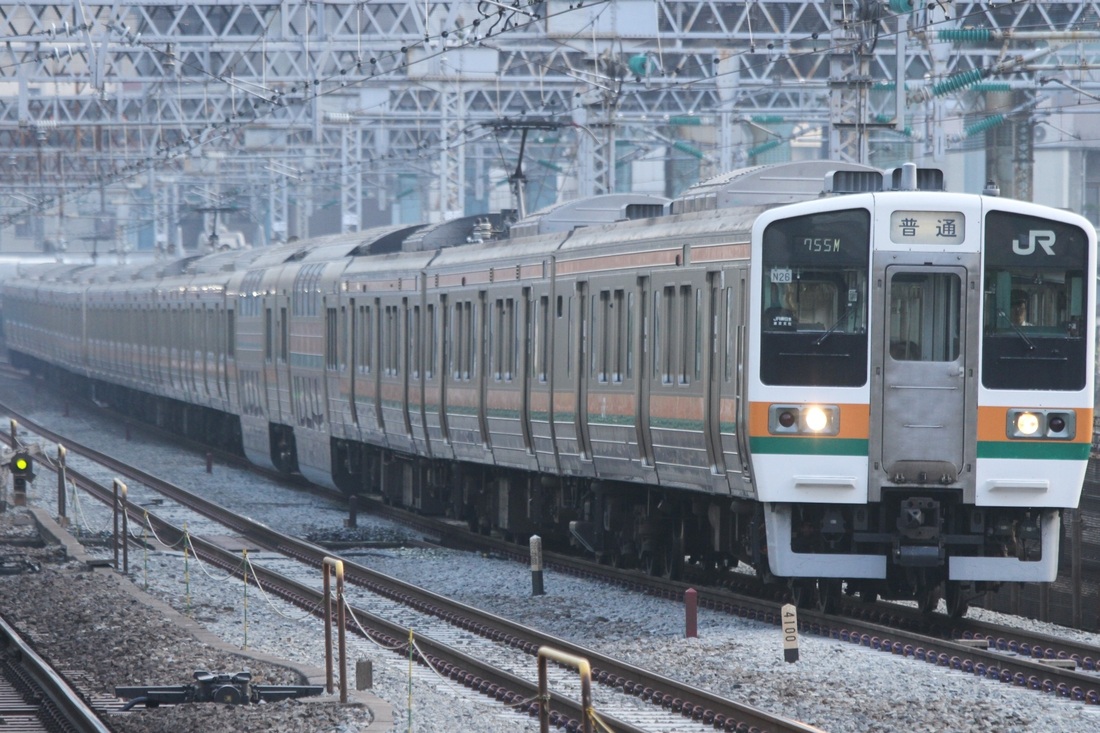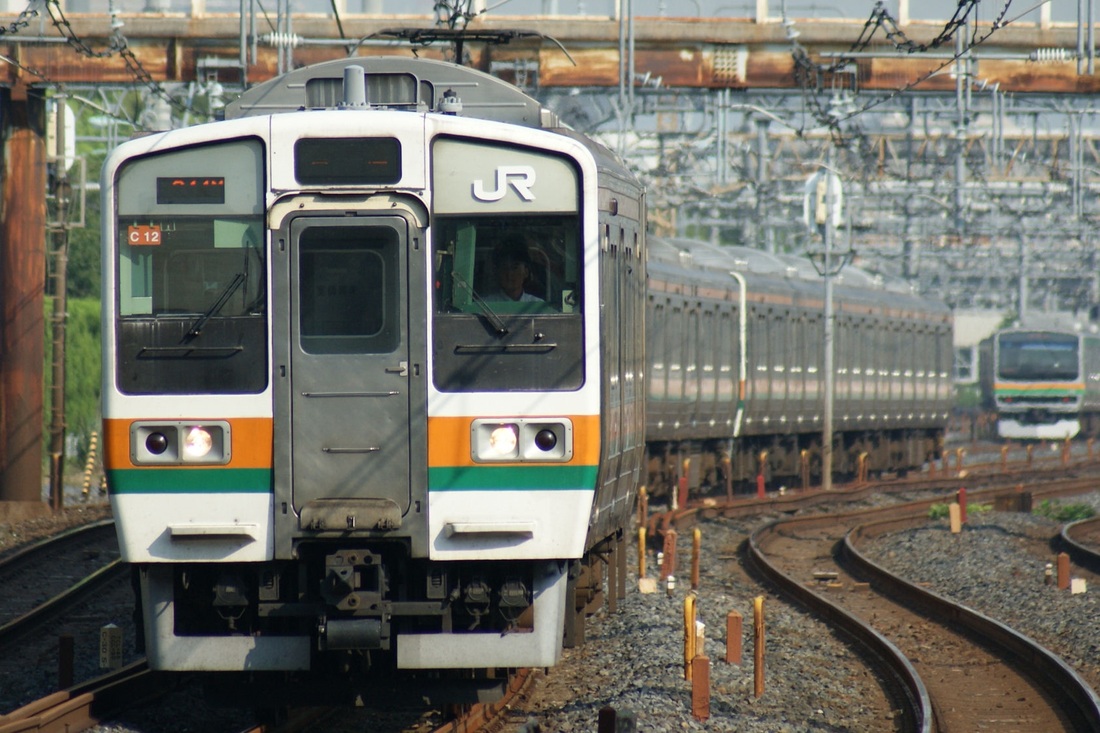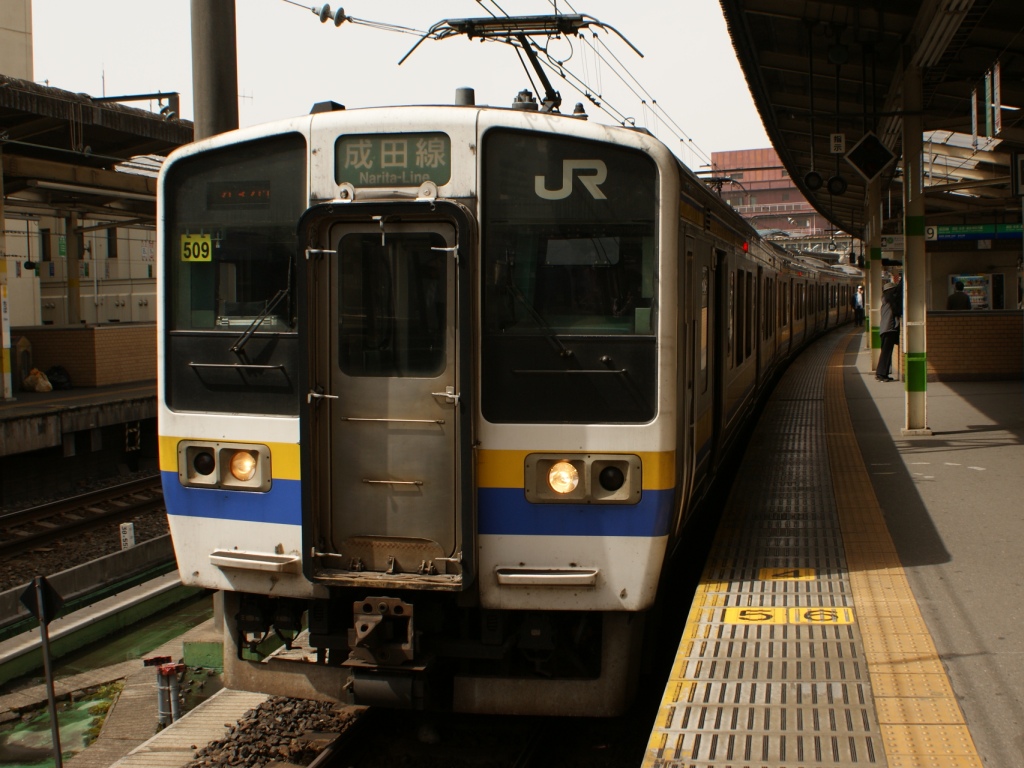|
A 211 Series on the Tokaido Line near Tamachi Station
(Courtesy of Railstation.net) A 211 Series train on the Tohoku Main Line (Courtesy of Railstation.net)
A 211 Series on the Narita Line (Courtesy of Railstation.net)
|
JR East 211 Series
|




